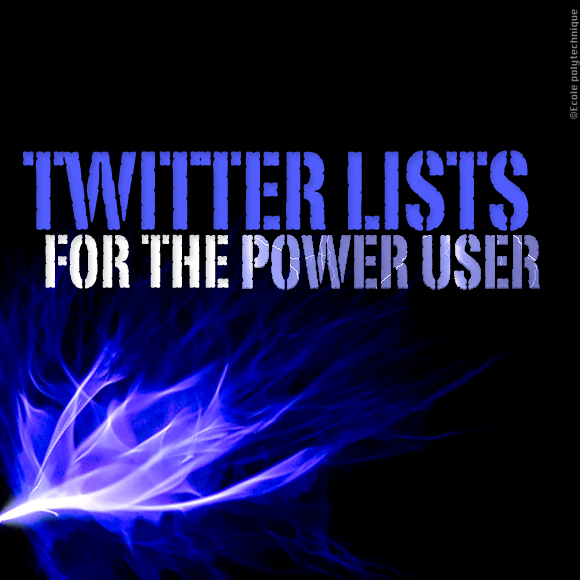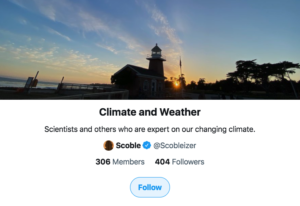
How to: Business Analytics Tricks You Need to Know For Twitter
Recently I’ve been using analytics for Twitter more and thought I’d share some of what I’ve been learning. Here’s a look behind the curtain at some of my favorite stats. These might strike you as a little nerdy, but they’re really quite fun! First, take a look at your overview in Twitter. To check your own analytics, choose home, then click the pull-down menu and choose Analytics.

Twitter Analytics Overview for 28 Days
Twitter Analytics Overview
From your overview, you can see at a glance whether the account is moving up, down, or flat. From my 28-day summary, you can see that Tweets, impressions, followers, and tweets linked to me are all up. Areas for improvement: Profile visits and mentions.

Monthly Summary
Another quick overview is the monthly summary. Above is mine from February of 2016. Tweet impressions are one item I like tracking. Don’t be fooled into thinking that vanity metrics, such as new followers, are important. As Eric Ries says, Vanity Metrics Are Dangerous (yes, it’s from 2009, but still holds true).

Top Ten Interests of a Twitter Audience
Audience Interests
You might be surprised to know what your audience is interested in. My top three are technology, entrepreneurship, and tech news. Of course, your audience is attracted to you by what you tweet. If you tweeted jokes and cartoons all day long, you’d see your followers’ top interest as comedy. The top interests (in particular the top three) can guide the content you provide.

Overall Impressions Show Heaviest Days
Overall Impressions
In the above bar graph, you can see day by day and week by week where my biggest impressions are. Because I have a Twitter chat on Tuesdays, those days get the most impressions. (More about measuring a Twitter chat, below, under Tweetreach.)

Impressions Can Tell You What to Share Again
Impressions
Here’s something that you can easily replicate. Take a look at the tweet with the highest impressions. Mine had 8 retweets and 8 favorites. There is something about your highest tweet that resonates with your audience. There are several ways to optimize this tweet (in this case a blog post).
- Wait a few days, weeks, or even a month and share it again.
- Change the headline and share it.
- Use a different image and retweet it.
- Share at different times of the day, still within business hours.
- Pin it to the top of your Twitter feed.
- Thank those who shared.
- Ask for retweets!

Gender and Household Income
Gender and Household Income
If you look at my analytics for gender and household income, you’d see that the majority make $175-250K+.
What does that tell me? Many of my followers could afford my services. I’ve taken over accounts before where the income has been much lower, although the product or service is an expensive one.

Country Analytics Can Help You Decide When to Tweet
Country
You can see from my analytics that most of my followers are in the United States. How does that help, though? It helps with when you time your tweets. I try to time mine between 9-5. If you’d like to know more about whether to schedule, how much to schedule, or how to balance, I talk about that in a previous post, Automation and Social Media: You Need to Know How to Balance.

Tweriod
Tweriod
For more detailed analytics, try out Tweriod. I know that my tweets early in the morning always get the most engagement. If you look at Tweriod, you can see when your followers are online.

TweepsMap World View
TweepsMap
Another way, besides Twitter’s own analytics, to see where your followers are is through an excellent and fun tool: Tweepsmap. Like the name suggests, you can get a map of your followers. So you can see which countries they’re in, or zero in on a state or city. Above is my worldmap.

State-by-State TweepsMap
Above is a screenshot of my state-by-state Tweepsmap. It’s interesting that Twitter analytics shows that 56% of my followers are U.S.-based and TweepsMap shows that 62% of my followers are in the U.S. At any rate, the majority are in the United States.
How does TweepsMap Help Me?
Suppose you are a purely local brick-and-mortar store. If you had above map, you might decide to focus more on gaining followers locally. Or, if you sell widgets overseas, maybe you don’t have enough followers in a particular country. So you can change your focus to attract more of the followers you’d like. Since the majority of my clients are in the U.S., this map is fine. That is, I wouldn’t change when I tweet.

Measure Your Hashtag or That of Your Twitter Chat with TweetReach
TweetReach
With Twitter, there are tools that can assist you in finding out how far a tweet or hashtag reached. For my chat, #DigiBlogChat, I use TweetReach, which gives you a snapshot report to show you potential reach, impressions and Tweet volumes. Login through Twitter.
Other Things to Measure
I like to measure influential followers, especially for local accounts. I track these over the course of a month in a spreadsheet or document. Also: a good one to track is conversations with people interested in your services. Sometimes those conversations take place in direct messages.
What One Thing Would You Measure?
If you could measure one thing, what would it be? Leave me a comment! Thank you.






















































Follow Carol!